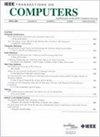能量-延迟感知联合微服务部署与边缘DVFS请求路由:一种强化学习方法
IF 3.6
2区 计算机科学
Q2 COMPUTER SCIENCE, HARDWARE & ARCHITECTURE
引用次数: 0
摘要
新兴的微服务架构为在边缘环境中容纳对延迟敏感的应用程序提供了机会。然而,这些应用程序是计算密集型和能耗的,对计算资源、能源供应和冷却能力有限的边缘服务器造成了很大的困难。为了减少边缘的延迟和能源消耗,高效的微服务编排是必要的,但也具有很大的挑战性。由于多个微服务之间通信频繁,服务部署和请求路由是紧密耦合的,这就引发了一个复杂的联合优化问题。当考虑大规模微服务的多实例建模和细粒度编排时,难度就大大增加了。然而,以往的工作未能解决上述困难。忽略了延迟与能量的平衡,尤其缺乏动态节能能力。因此,本文通过多实例建模、细粒度编排和动态适应,共同优化微服务部署和请求路由,最大限度地降低了能量和延迟。我们的排队网络模型支持精确的端到端时间分析,包括排队、计算和通信延迟。然后,我们提出了一种延迟感知强化学习算法,该算法派生出静态服务部署和路由决策。此外,我们还设计了一种能量感知的动态频率缩放算法,以节省波动请求模式下的能量。实验结果表明,我们的方法在延迟和能耗方面都明显优于基线算法。本文章由计算机程序翻译,如有差异,请以英文原文为准。
Energy-Delay-Aware Joint Microservice Deployment and Request Routing With DVFS in Edge: A Reinforcement Learning Approach
The emerging microservice architecture offers opportunities for accommodating delay-sensitive applications in edge. However, such applications are computation-intensive and energy-consuming, imposing great difficulties to edge servers with limited computing resources, energy supply, and cooling capabilities. To reduce delay and energy consumption in edge, efficient microservice orchestration is necessary, but significantly challenging. Due to frequent communications among multiple microservices, service deployment and request routing are tightly-coupled, which motivates a complex joint optimization problem. When considering multi-instance modeling and fine-grained orchestration for massive microservices, the difficulty is extremely enlarged. Nevertheless, previous work failed to address the above difficulties. Also, they neglected to balance delay and energy, especially lacking dynamic energy-saving abilities. Therefore, this paper minimizes energy and delay by jointly optimizing microservice deployment and request routing via multi-instance modeling, fine-grained orchestration, and dynamic adaptation. Our queuing network model enables accurate end-to-end time analysis covering queuing, computing, and communicating delays. We then propose a delay-aware reinforcement learning algorithm, which derives the static service deployment and routing decisions. Moreover, we design an energy-aware dynamic frequency scaling algorithm, which saves energy with fluctuating request patterns. Experiment results demonstrate that our approaches significantly outperform baseline algorithms in both delay and energy consumption.
求助全文
通过发布文献求助,成功后即可免费获取论文全文。
去求助
来源期刊

IEEE Transactions on Computers
工程技术-工程:电子与电气
CiteScore
6.60
自引率
5.40%
发文量
199
审稿时长
6.0 months
期刊介绍:
The IEEE Transactions on Computers is a monthly publication with a wide distribution to researchers, developers, technical managers, and educators in the computer field. It publishes papers on research in areas of current interest to the readers. These areas include, but are not limited to, the following: a) computer organizations and architectures; b) operating systems, software systems, and communication protocols; c) real-time systems and embedded systems; d) digital devices, computer components, and interconnection networks; e) specification, design, prototyping, and testing methods and tools; f) performance, fault tolerance, reliability, security, and testability; g) case studies and experimental and theoretical evaluations; and h) new and important applications and trends.
 求助内容:
求助内容: 应助结果提醒方式:
应助结果提醒方式:


